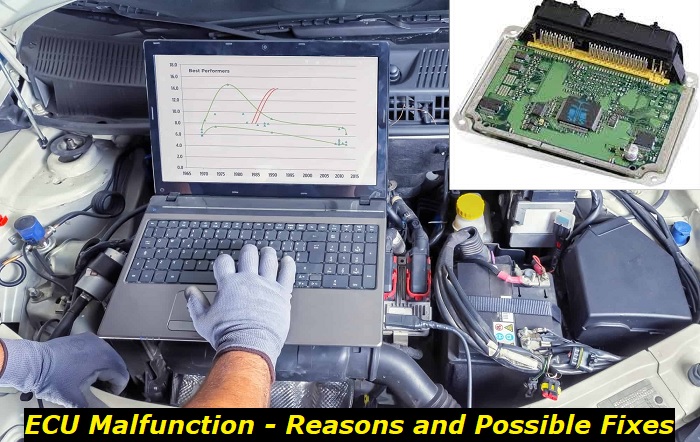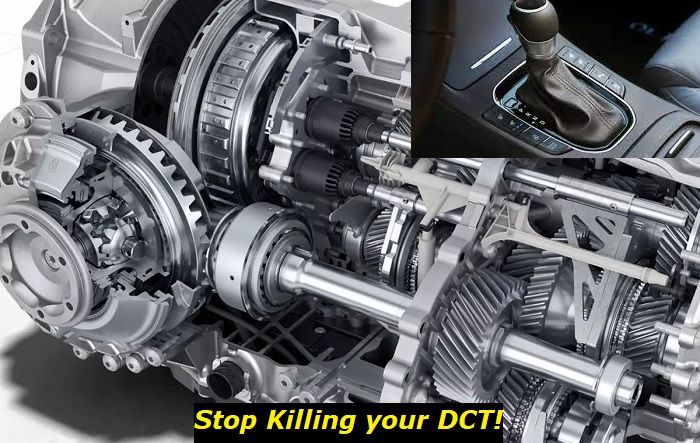Are you experiencing problems with your vehicle's engine? If so, it could be due to a malfunction in the Electronic Control Unit (ECU). The ECU is an essential component of modern vehicles that controls and monitors various functions within the engine. Knowing how to locate and fix issues related to the ECU can help keep your car running smoothly.
ECU problems highlights
- Module's importance:Extremely high
- Prone to failure:Yes
- Reasons for failure:Water, damage, software, low voltage, high voltage
- Ways to reset:Cut power, use scanner tool
- Sphere of control:Engine and emissions
- Symptoms of failing:Engine anomalies, CEL light, no start, random warnings
- Price to repair:$150 - $350
- Price to replace:$800 - $1,700

How the Electronic Control Unit Works
Before diving deeper into the topic, it's important for you to understand how the electronic control unit of the engine works. This is for you to have an idea of its operation, how a problem can develop in this part, and determine the various parts that chiefly contribute to its function.
The Electronic Control Unit (ECU) is a type of computer system that controls the processes and operations of an automobile. It is responsible for managing a wide range of functions, such as engine performance, emissions control, fuel efficiency, idle speed control, ignition timing, and emissions tests. In essence, it manages the function and operation of all the electrical components of a car.
By contrast, an Engine Control Unit/Engine Control Module (ECU/ECM) is a specialized computer system designed to manage the internal combustion engines on vehicles. Specifically, it regulates aspects such as fuel mixture ratio, ignition timing advance/retardment rate, valve lift duration, and intake air pressure among other things. The ECU/ECM also has sensors to monitor these parameters inside the engine and adjust them accordingly.
The two units are often mistaken for one another because they both involve technology that controls the operation of a car's engine-not to mention that they share the same acronyms. However, it is important to note that the Electronic Control Unit handles electronic components outside of the engine, while the Engine Control Unit focuses on operations within the engine itself.
Due to their similar roles in controlling automobile operations, they are often confused as being one and the same thing. This confusion can lead to incorrect repairs or parts replacements when diagnosing automotive issues. It's therefore important for technicians and car owners to know how to properly differentiate between an Electronic Control Unit and an Engine Control Unit. Knowing this distinction will help ensure proper diagnosis and repair of any automotive issue.
By understanding the difference, you can ensure that your car is running smoothly and efficiently. You can also be sure that you are getting the correct parts or services for your vehicle. Having an accurate understanding of the Electronic Control Unit and Engine Control Unit will help keep your car's proper operation for years to come.
Together, the Electronic Control Unit and Engine Control Unit play a crucial role in controlling all aspects of a car's operation. Knowing the difference between them is essential to ensure proper diagnosis, repair, and maintenance of vehicles. With this knowledge, owners can ensure that their cars are running at peak performance levels with minimal issues.
Lastly, for the sake of this article and just to clear things up, any mention of ECU in the succeeding sections will always refer to the Electronic Control Unit.
Key Symptoms of a Malfunctioning Electronic Control Unit in the Engine
It is important to recognize the primary symptoms of a malfunctioning ECU, as this can help ensure the proper diagnosis and repair of any automotive issue. Only by understanding the nature of such issues can technicians or owners accurately diagnose and repair their vehicles.
Having a comprehensive knowledge of your car's main components is essential for its longevity and performance. Recognizing the primary symptoms of a malfunctioning ECU will go a long way in keeping your vehicle running optimally for a long time.
When it comes to recognizing a malfunctioning Electronic Control Unit (ECU) in the engine, there are some telltale signs that can be identified. A few of the common symptoms of an ECU issue include:
1. Engine Performance Degradation
When an ECU issue is present, you may notice that your car's overall performance has decreased. This may include poor acceleration, sluggish responses to changes in throttle, and a reduction in fuel efficiency.
2. High-Idle Speed
If your engine idles unusually high even when all accessories such as air conditioning and headlights are turned off, then this could indicate an ECU problem. This symptom is usually accompanied by reduced power output while driving or accelerating from a stop.
3. Erratic Start-Up
Starting up the engine can be a difficult task if there is an ECU malfunction. You may experience difficulty in starting up the car or it may not even start at all.
4. Unusual Engine Sounds
If you hear knocking, hissing, ticking, or other unusual noises when your vehicle is running, this could indicate an issue with the ECU. Such issues usually result in decreased performance and inadequate fuel economy as well as increased emissions output.
5. Malfunction Indicator Light (MIL)
A blinking MIL light on your dashboard indicates that there is trouble with one or more of your vehicle's systems, and this could be caused by a problem with the ECU.
It is advisable to have your vehicle serviced regularly in order to identify any potential problems with the ECU early on before they become serious issues. Doing so will save you both time and money in the long run by avoiding costly repairs that could have been avoided had the problem been identified and fixed earlier.
It is also important to choose a reliable automotive technician who has experience in dealing with ECU issues. This will ensure that any repairs or servicing are done correctly so that your car runs as smoothly and efficiently as possible for as long as possible.
Most Common Parts that Contribute to Malfunction in the ECU and Their Solutions
Understanding the most common parts that are most likely to contribute to a malfunction in the ECU is an important step during the diagnostic process as these will provide you with a good starting point during your evaluation.
Most problems in the ECU commonly stem from the following components:
1. Fuses
The most common contributor to ECU failure is a blown fuse. To confirm your suspicion, you can test the fuses in the engine by using an ohmmeter and checking for continuity through the circuit. Replacing any faulty or damaged fuses should help to restore full functionality to the ECU and other electrical components in your car.
2. Wiring
Damaged, corroded, or exposed wiring can impede signals from reaching the ECU leading to poor performance levels as well as decreased fuel efficiency due to incorrect readings. Inspecting all wiring in your car regularly and replacing any faulty parts will ensure that all signals reach their intended target without impediment.
3. Connectors
Another common issue with ECUs is loose or corroded connectors. It is important to check all the connectors that link devices or systems in your car and ensure that they are securely fitted and free from any corrosion or damage.
4. Sensors
Commonly found on most engine management systems, sensors are responsible for collecting data related to the performance of various components and distributing this information to the ECU in order for it to make adjustments as needed. When these sensors become faulty, it can cause problems with the ECU's ability to monitor performance levels resulting in poor performance as well as increased emissions output. Ensuring that all sensors are functioning correctly is essential for the optimal operation of the vehicle.
5. ECU Software and/or Hardware
Software or hardware issues within the ECU itself can sometimes cause problems. Replacing any faulty components and/or updating the unit's software via reflashing may be needed in order to restore full functionality to the ECU.
Conclusion
In conclusion, understanding and identifying parts that are most likely to lead to a malfunctioning ECU is essential for proper diagnosis and repair of any issues. By following these steps, you should be able to assess your vehicle and identify any potential problems with its ECU quickly and easily. Doing so will help ensure that your car runs smoothly for as long as possible, saving you both time and money by avoiding costly repairs in the future.
If you find yourself unable to identify or fix the problem with your vehicle's ECU, it is best to seek professional assistance from an experienced automotive technician. With their help, you can ensure that any repairs or servicing of your vehicle's ECU are done correctly and efficiently, leading to optimal performance for as long as possible.
Of course, regular maintenance is also important when it comes to ensuring that your car runs smoothly and efficiently, so be sure to have your vehicle serviced regularly in order to identify any potential problems before they become serious issues.
About the authors
The CarAraC research team is composed of seasoned auto mechanics and automotive industry professionals, including individuals with advanced degrees and certifications in their field. Our team members boast prestigious credentials, reflecting their extensive knowledge and skills. These qualifications include: IMI: Institute of the Motor Industry, ASE-Certified Master Automobile Technicians; Coventry University, Graduate of MA in Automotive Journalism; Politecnico di Torino, Italy, MS Automotive Engineering; Ss. Cyril and Methodius University in Skopje, Mechanical University in Skopje; TOC Automotive College; DHA Suffa University, Department of Mechanical Engineering






Add comment